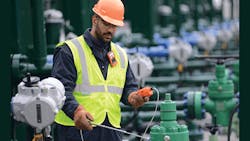After a long day at the office, you come home to a pleasant surprise waiting on your doorstep: that brand new, fancy electronic gadget that you ordered a few days ago. It has the all the bells and whistles, and your friends will be jealous.
What's the first thing that you do after opening the package? If you're like me, you immediately start to customize the new toy exactly the way that you want it. Maybe you adjust the brightness of the television. Maybe you rearrange the apps on your smartphone to place your email front and center.
Maybe you install that new software on your laptop that you just can't live without.
Today's consumer electronics were designed to fit your needs, not a one-size-fits-all model developed by an engineer at a factory. We demand customization from our consumer electronics. Why don't we demand the same of our electronic tools that we use daily at work? Why don't we demand the same customization of the tools that could potentially save our lives?
The good news is that gas detection recently has come a long way and is getting closer to a consumer electronics-level of customization and flexibility. Leading gas detection manufacturers have introduced new monitors that may be customized based on the application, the user's experience level and your company's policies. There's no need to scroll through dozens of screens in a complicated user interface when you use only a few features on a daily basis.
Customization makes gas detection more convenient for trained safety professionals, but may be a life saver for a new employee who has little experience with these tools. Are you confident that every employee and contractor at your facility properly uses gas detection?
Here are some ways to make customization work for you, your employees and your contractors.
Proper Maintenance through Customization
Like all tools, gas detectors must be properly maintained and users must be properly trained. A customizable gas detector can simplify maintenance and direct the user to the most critical information.
Maintenance reminders are onscreen prompts that show the user that maintenance is required per company policy. The two most common maintenance reminders are "calibration due" and "bump test due." These features remind users, with a basic flash or beep, to properly maintain an instrument based on your company's calibration and bump test intervals.
It's very time consuming to ensure that every gas detector at your facility is properly maintained. Use the bump test and calibration due reminders as an extra safeguard to warn users to take action.
The third and newest maintenance reminder is "dock due." Docking stations are becoming more common, as they make instrument maintenance quick and easy. If you have a docking station nearby, does your team need to know if a calibration is due or a bump test is due? No. The user's reaction is the same – just dock the instrument and allow the docking station to handle any maintenance that is necessary.
The dock due maintenance reminder consolidates bump test and calibration due alerts into one feature, simplifies operation for your team and limits reliance on periodic training. With dock overdue, there's no need to train on the difference between a bump test and a calibration. Allow your team members to focus on their jobs, not the gas detector.
In addition to bump test and calibration due notifications, many instruments allow the start-up process to be modified to prompt users to properly maintain their instruments. The two most common features are a zero prompt and a bump test prompt.
Just like the names imply, if enabled, these features prompt the user to zero the instrument or start a bump test after starting the instrument.
Before you enable these features, think carefully about your application. Are your instruments always started in clean, fresh air environments? If not, be cautious about enabling the zero prompt as users may improperly zero the instrument. Is calibration gas always available when instruments are started? If not, be cautious about enabling the bump test prompt, as a failed bump test (due to lack of calibration gas) may take a functional gas detector from a worker's hands.
Proper Operation Through Customization
Have you ever heard in a training session to "ignore that screen," "don't press any buttons on that screen" or "call Mike if you get confused?" Many gas detection manufacturers have forgotten that welders, laborers, carpenters, operators, etc. are the primary users of gas detectors, not a team of safety experts. Features are great, but not if they can be a nuisance and prevent the job from getting done.
The operation of several new gas detectors may be customized to fit the needs of the application, the user's experience level or a combination of both.
Many gas detectors have up to 10 screens in operation mode – showing gas readings, STEL levels, TWA levels, peaks, prompt to zero, prompt to bump test and prompt to calibrate plus reference data such as last calibration date and alarm settings.
Information is great for safety professionals, but is all this information necessary for a welder? Or is he just wearing a gas detector to stay safe, employed and trying to focus on the important task at hand?
Look for a gas detector with the ability to modify the operation screens. If there's no reason for the user to view the peaks, remove that screen. If there's no reason to maintain an instrument in the field, remove those options as well.
Gas detectors are life-saving devices, but one size doesn't fit all. Let's keep our teams safe (and productive) by using all of the capabilities of the latest gas detectors.
Scott Jubeck is director of product management and instrumentation at Industrial Scientific Corp.
